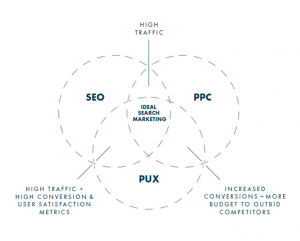Transitioning from a lead-based marketing strategy to an account-based approach makes good business sense, but that doesn’t mean it’s going to be easy! A successful transition not only requires good planning and resources, but also an experienced staff of marketers who understand ABM, and are willing to embrace change. This isn’t something you can just decide on and start tomorrow— you must be patient. Transitioning your team from a lead-based mindset may be challenging, however, the payoff is worth it!
Scale, Scope, and Strategy
When you’re ready to start implementing a new account-based marketing approach, take these three dimensions into consideration before moving forward:
1. Scale—How big do you want the program to be? How many accounts and how big are the deals?
Do you have the resources to handle the scale you want?
2. Scope—Do you plan to start off small, targeting just a few accounts, or will you target many accounts for
a program that can be easily scaled?
3. Strategy—Are you looking to win new accounts, or is your primary concern to grow existing accounts?
Use these dimensions as a starting point, and then customize your plan with them in mind.
Sales and Marketing Alignment
ABM is not the right name for the process of going after target accounts, it is really account-based everything, which means sales and marketing teams must work together. This will involve more than just telling them they have to align with one another—each team needs to have a real understanding of the new process, and why they need to work together.
Communication is key here:
- Don’t introduce the transition as just another new marketing campaign—position it as a completely new collaborative approach.
- Don’t commit to the program until all of your marketers, account execs, and SDRs are completely committed to ABE and ready to collaborate.
- Show the Sales and Marketing teams what’s in it for them.
- Agree on criteria for selecting and removing accounts from the program, as opposed to just agreeing on accounts to target.
- Agree on which short-and-long term metrics do and don’t matter. The aligned team will track metrics together.
- Have Sales and Marketing create an account plan for each account together.
- Hold weekly meetings at the start.
- Be clear about the new approach, and how both teams will need to collaborate on every level.
Most importantly, make sure that the leaders on each of your teams are 100% on-board, and that they understand the metrics and timescales will be different from traditional selling and marketing strategies.
Building Your Account-Based Strategy Team
The most successful ABE team members work well collectively. They must be patient, data-driven, strategic, and have excellent communication skills.
Your ABE team should look something like this:
- Account-Based Marketer—The one who spearheads the project, manages the alignment process, and orchestrates all marketing interactions. This is the team member who will most likely design various account-based plays.
- Account Executives and Sales team—These members manage relationships with accounts and become their trusted advisers.
- Sales Development Reps—These are the account builders and researchers, the front-line for account-based outreach.
- Solution Consultants/Delivery Personnel—Makes sure that the programs’ messages resonates with customers. They provide trusted information to the customer.
- Field Marketer—Works with ABM Marketer to implement interactions locally.
- Corporate Marketer—Works with ABM Marketer on corporate interactions and communications.
- Industry Marketer—Provides industry insights.
- Product Manager—Decides if custom solutions are required for specific accounts.
- Professional Services Representative—Offers insight into how the technology is used, and what does or does not have value for the ABE team.
- Support Representative—Provides support items when necessary based on reports and satisfaction scores.
Change Management
Managing the change to an account-based strategy is vital to its success. If active change management isn’t implemented, it’s all too easy for team members to revert to their old ways of doing things, without even realizing it.
Successful Change Management includes:
- Listening to the people who will be implementing the change to understand where their mindset is in regards to the program.
- Being clear about why the change is needed.
- Communicating frequently with the entire team to get feedback and remind them of their goals.
- Using metrics to show progress.
- Paying attention to resistance (don’t ignore it).
- Celebrating successes—make sure the whole ABM teams knows when you land a new deal!
Don’t get left behind!
Winning over coveted accounts and closing big deals isn’t easy, but the more you stay with the old way of thinking, the more time you lose—time that could be used to develop those accounts and eventually land those big accounts. Remember, you’re a business to business company, not a business to leads company!
Business & Finance Articles on Business 2 Community(54)





